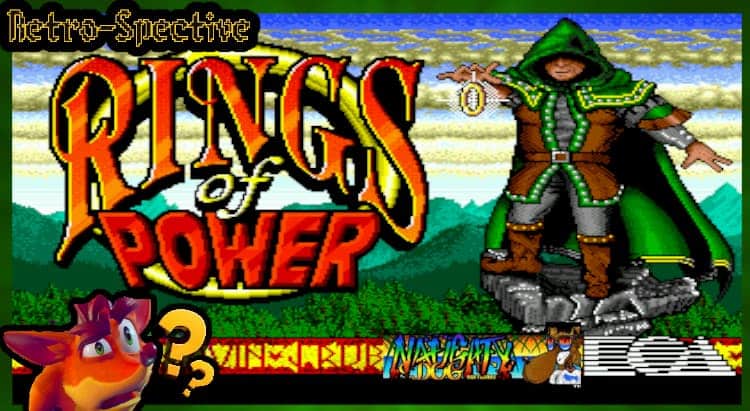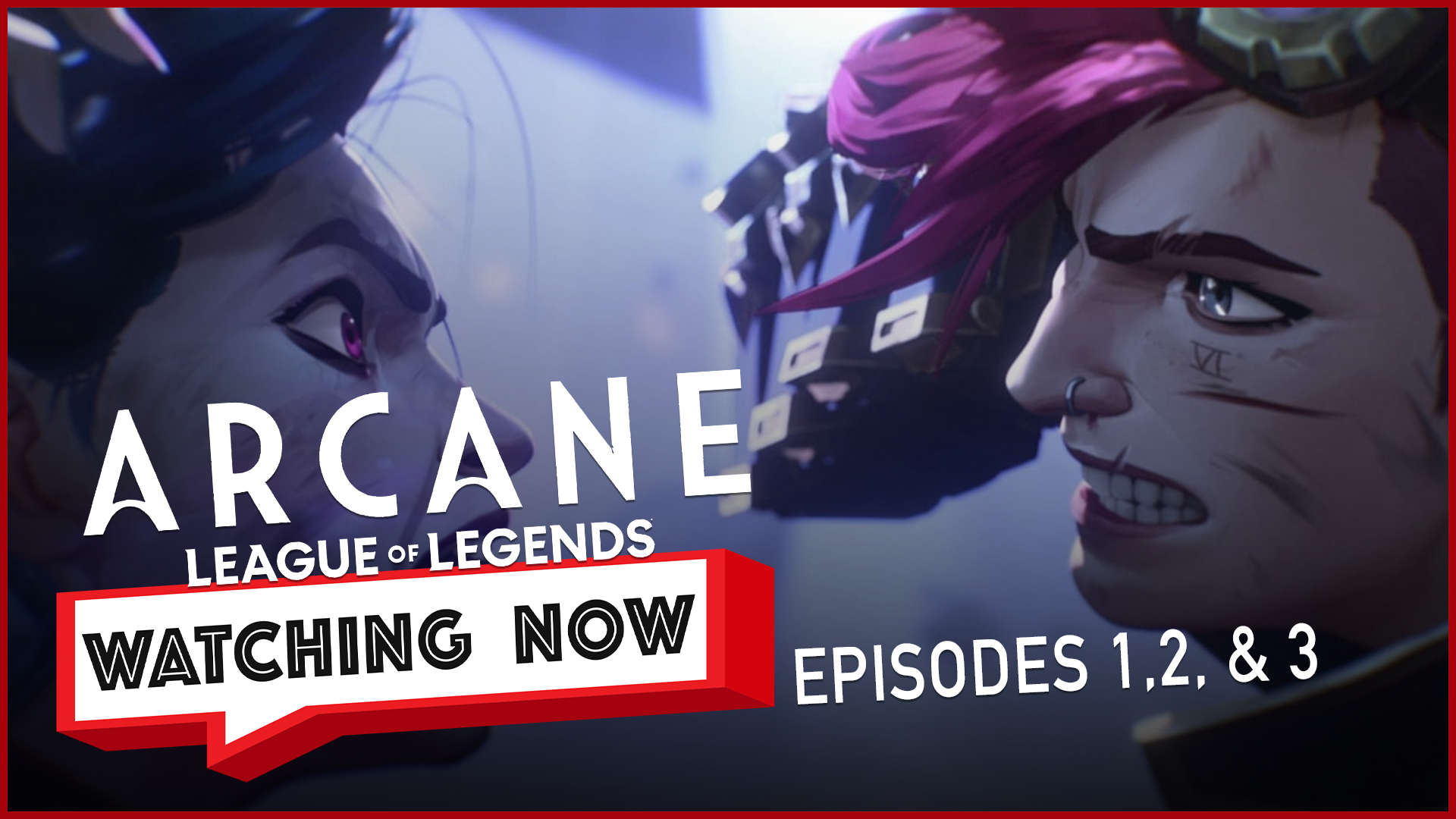
Today, I’m going to be showing you a game from the 90s that you may not even know existed, one of Naughty Dog’s early gaming outings before the company gained just a tiny bit of fame from Crash Bandicoot and The Last of Us. The team at the time was far removed from Neil Druckman’s current successes, the game being in the hands of Jason Ruben and Andy Gavin, the co-founders of Naughty Dog Software and, later, the creators of Crash Bandicoot.
You may want to prepare yourself for this because it was a game from the early 90s that wanted to experiment, far away from the polished and beautiful set pieces this studio has become known for. This game wanted to break into RPG gaming in a fun and reckless way.
Rings of Power (Not related to the Amazon prime show based on JRR Tolkien’s Lord of the Rings) took inspiration from many places, Dungeons and Dragons, religious texts, The Lord of the Rings (Purely the books), Star Wars, and any number of tropes that existed during the nineties era of table-top roleplaying. But it wanted to do them on the Sega Genesis (Or the Megadrive to folks like me in Europe), early in its life too. It was released in January 1992. Imagine Ellie and Joel having a conversation and randomly coming out with this:

It boasted a “functioning” save system that could soft-lock you if you used it at the wrong times and sometimes made you lose hard earned currency upon loading the game. It had the world’s chunkiest instruction manual with over 200 pages of lore, character info, and food and water consumption while riding vehicles. (The dragon eats a lot of food) and a lot of lore about places. It also provided quite detailed information on all your recruitable characters and their skills/spells right down to damage, stores that sold them, and mana costs.

The story is fairly simple, The God of the world is really lazy, and this game’s version of the devil is quite active, openly converting people and hunting down a reality-bending item called “The rod of creation”. You’re told by your master, who is definitely not going to die, that it’s your job to hunt down the rings that make up this rod and deliver them back to the lazy deity, who apparently holed himself up in his tower and won’t come out till humanity behaves itself.
The titular rings of power are 11 rings lost to time and myth scattered around an isometric world
The instruction manual gives you vague hints as to where all 11 are or were at one point, it doesn’t tell you how difficult it is to obtain them, just where they might be. Strangely enough, some of these hints aren’t present in the game itself, electing to use different clues in game. If you got this game hoping for an amazing RPG experience and got a second-hand copy of the game from someone who lost or damaged it? You were pretty much screwed. Sure, it’s possible to use the in-game hints to get all the rings, but you would have to comb every single inch of the game blindly for at least 3 of them. For instance, the ring of intuition, which characters in the game will tell you is about “Solving unstructured and incoherent problems.”


After you mercilessly kill a homeless man on your master’s orders over a door sign, he gets killed at the academy of sorcerers by one of his own students, who is sporting a sick evil beard and bald head combo. In his last act, your master teleports you away, before he kills everyone, to the outskirts of a city with a note detailing where to find your first party member, and you should recover the rings after.

After that, you are free to do whatever you like. You can search out party members, explore, murder townspeople, make money, play at commerce, and click every single option on dialogue wheels on every NPC imaginable, hoping at least one of them will finally give you that one hint you need to progress. There’s no morality system in this game, kill whoever you like, do what you like. As long as god gets their toy, they’ll forgive everything you did to get it for them. And oh boy, does this game like to get into atrocities.

Here’s a list of crimes you can commit and nobody will care:
– Thievery
– Piracy
– Murder (As long as you’re not in the same room as witnesses)
– Bribery of public officials
– Aiding criminals
– Disrespecting the dead
– Stealing milk from children
– Feeding a small bird to a dragon
– Home invasion
– Parking your dragon in front of the inn so nobody can leave
– Regicide
– Necromancy
– Blasphemy
– Dragging your dead master’s soul back to the mortal plain to terrify enemies to death while he looks like he’s lost and confused in Walmart.

Combat places your party on a grid, you can then choose spells you’ve found in-game to cast. It’s pretty random who hits what, and all you can do is direct attacks, except when you get to the Level 9 spells like Master above. Those spells hit everything for absurd levels of damage but cost almost all your Mana points. Managing mana becomes a huge part of your exploration preparations. If you don’t have mana you can’t cast spells, making you much more likely to die.


There are 6 classes all with unique skills, effects and really satisfying animations for all your effort in getting to the higher levels. You can make enemies attack each other, summon elemental attacks that affect the field, raise dead enemies to attack the living ones, and one of the really best parts of this game was the death sound. A gut wrenching cry when something died at your hands, I never got tired of it.
Exploration took place on isometric grids, similar to Final Fantasy 1. You’d move your icon around a mini version of the town you were in, the screen would wrap around your character maintaining a small grid, then when you went into buildings, you’d be zoomed in on to explore the interior. Also, you had the ability to zoom in on the square you were standing on. Sometimes you’d find treasure, sometimes enemies, but most of the time, there would be nothing.
The world was a very detailed and hectic world map, filled with a lot of towns, villages, dungeons, fortresses, the occasional cult, a town where half is old, and half is young. and… an insane asylum filled with crazy people who scream at you. Should I mention this game lets you kill all NPCs? Oh no, wait, that NPC was vital to progressing… whoops!


Now I’m going to list off some interesting facts about the game that I feel are some of the highlights of the game and its sometimes hap-hazard design.
– There is a 0.04% chance that stepping on any square in the game, you will cross paths with Void, who is effectively this game’s devil. You are then killed via text box and told you are dead. At any point in this game you can just die, and there is nothing you can do about it.

-The odds of winning the lottery were busted. If you made enough money you could simply spam the lottery and always win a fortune by mashing the buy tickets button, as long as you had enough starting capital.
– A glitch in the game allowed you to continually spam answering one specific trivia question to gain maximum experience for everyone.
– One ring requires you to show a person a picture of the ring because it’s masquerading as a human. To get this picture, you have to willingly fight an incredibly tough battle that you would likely skip by camping inside an inn, which then forces you outside, making you bypass moving downstairs to confront them. The thing is, this picture is never even alluded to being important, it’s just a drop you happen to get. Talk about punishing exploits!
– One ring is hidden in a place between a sun and moon temple, it’s incredibly natural to look there. What wasn’t natural is finding the directions to navigate the death minefield that’s between you and the ring. The answer? Some dude in an insane asylum chants the directions to safely make it across. Just casually just there. You’d have no idea what he was going on about without finding the ring first.
– There was an Easter egg that if you loaded up the game while holding down certain buttons on the second controller, you would see a quite naked lady on the opening screen instead of the protagonist Buc. Sadly, this Easter egg is one of the few reasons anyone ever talks about it since it had one printing run in Europe and the USA and afterwards, EA refused to print more copies of it despite moderately good sales. The last time I can see anyone talk about this game in any detail was in 2014.
– One part has you enter a tower for information, or you can stumble randomly onto it. Sadly, the tower owner has home security in the form of forcing you into a cutscene and putting you in jail with no option to fight him. Now if you didn’t save one minor NPC in a totally unrelated questline, where the NPCs plead you to execute him and not let him go. You will sit in this jail and die. The only way to be saved is to save this one guy. All because he happens to be there to be able to save you. Try figuring that one out without a guide!

Truth be told, I know I’ve pointed out a lot of this game’s flaws, but that’s only because I want you to see just what Naughty Dog was up to back then. Rings of Power sold moderately well, but EA didn’t agree to reprint the game, sadly disillusioning the developers for a time.
But when I played it I was blown away by how much freedom I could get from a mega drive game. So much to the point I still remember and cherish this title because of how bold it was. Games like this just didn’t exist on the Megadrive outside of Shining Force, which I could never get a hold of. I spent hours on this game, learning everything I could about it, and honestly, it was time well spent.
I loved this game, it was quirky and silly in all the right places, and the gameplay was sort of confusing at times, but it really made me think and want to explore. You just don’t get games like this that refuse to hold your hand anymore, I will always appreciate it for giving me an unforgiving RPG experience as a teenager. It got me into the games universe in a big way since it was my effort that led to any sort of progress.




